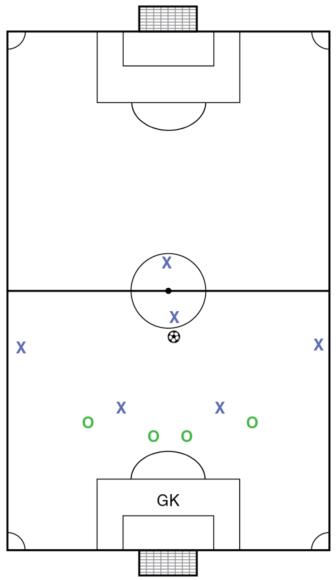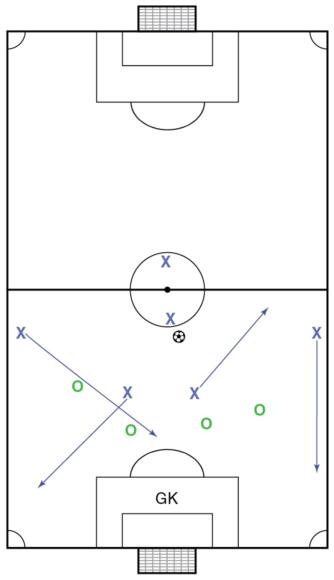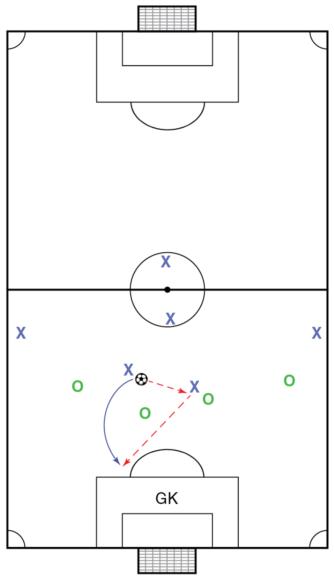Principles of Attack
This is an excerpt from Soccer Science by Tony Strudwick.
The principles of attack will help a team in possession of the ball react to any situation during soccer. These principles apply regardless of the system of play and formation played by the team, and they will always apply, no matter how the game evolves. The principles of attack apply when a team is looking to keep possession of the ball, move the ball forward into an attacking position and create chances to score a goal. Principles of attack include the following:
- Penetration
- Support
- Width
- Mobility
- Improvisation and creativity
Penetration (figure 22.1) is the ability to play through or behind the opposition. Penetration is achieved by exploiting space with good on- and off-the-ball movement. A key facet behind the principle of penetration is to encourage players to look forward and exploit the space behind the opponents.

Penetration.
To maintain possession and move the ball down the field, the player on the ball needs support (figure 22.2). Forward, back and side support facilitate attacking options. When in possession, support requires good dispersal to spread the field. Angles, distance and timing of passes also become important.

Support.
Stretching the defence to create width (figure 22.3) should always be in the minds of the attacking team. Opponents can be stretched vertically or laterally. The ability to stretch opponents laterally across the field provides the opportunity for penetration through wide areas. Correct positioning also gives opportunities to switch the play to exploit the weak side.

Width.
Individual speed and the ability to interchange positions, or mobility (figure 22.4), are important in contemporary soccer. The ability to interchange positions and provide good movement to support the play creates attacking opportunities. Movement on and off the ball can create space for the first attacker or other players.

Mobility.
Improvisation and creativity (figure 22.5) are the most exciting principles. They represent the ability to provide inventive and unpredictable play achieved through either individual skills or small-group combinations, such as one-on-one plays, one-two passes, overlaps or feint movements, to create attacking opportunities.

Improvisation and creativity.
The events that occur immediately after regaining possession often determine the outcome of a competitive match. A fast, positive response at this time can catch teams off balance and in poor defensive shape. Transition should be discussed as part of the strategy and tactics of a team, and the principles covered in this section should be used.
Learn more about Soccer Science.
More Excerpts From Soccer ScienceSHOP

Get the latest insights with regular newsletters, plus periodic product information and special insider offers.
JOIN NOW


